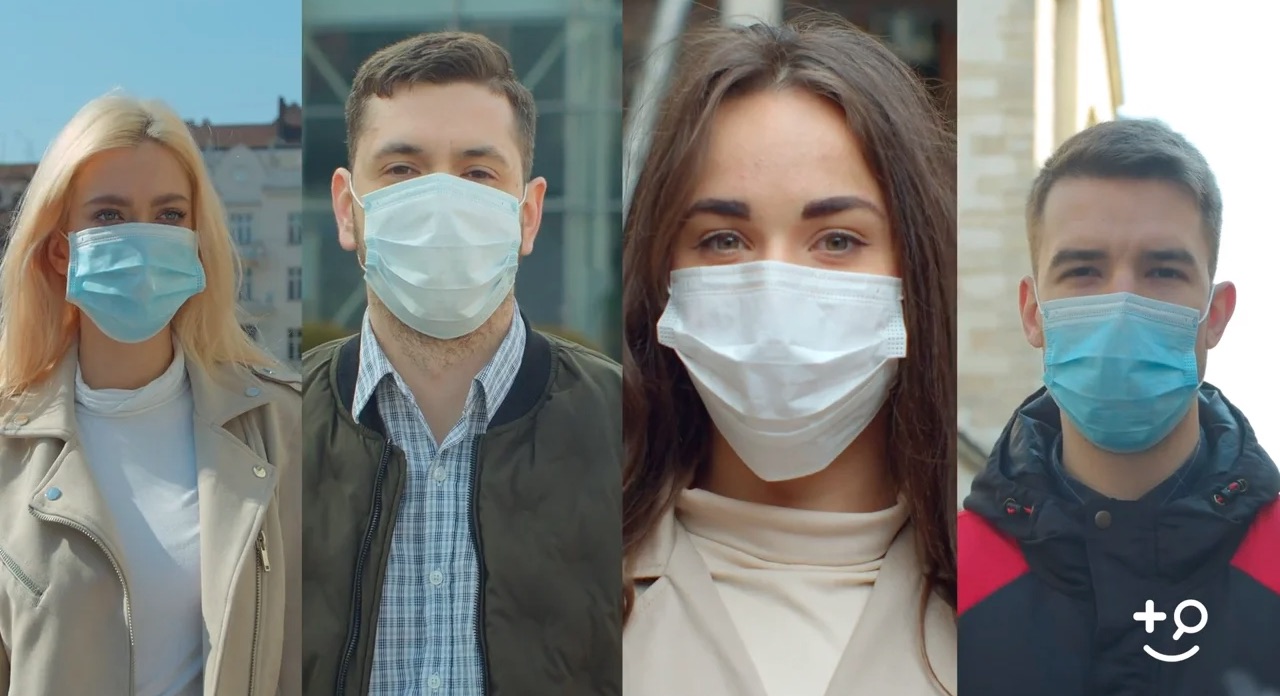The symptoms associated with the diagnosis for COVID-19 are independent of location. Whether you live in New York City or Mumbai, cough, fever, and shortness of breath are the basis for diagnosing the disease. The COVID-19 pandemic has given rise to potentially uplifting statements, such as, “we are all in this together”. These words are heartfelt and almost believable, at first impression. We aspire to create an environment of hope and common humanity as we watch communities and countries grapple with the leveling impact of Coronavirus.
As a pathologically optimistic person, I embrace the concept. However, the reality of availability of health care access required to diagnose, manage symptoms, and recover successfully from COVID-19 is directly proportional to access to care. Economic fragility is the most significant obstacle to health care.
In the context of global health, there are populations whose vulnerabilities placed them at increased risk for health problems prior to the pandemic. The potential survival of an individual depends on economic security.
In the spring of 2020, all people face the potentially grave consequences of the Corona virus pandemic. As a practicing obstetrician/gynecologist, my work experience has reinforced the understanding that all women desire adequate health care. My specialty focuses on health for women and girls. In many global communities, including in America, vulnerable populations will suffer the repercussions of economic, social, and gender inequality compounded by the coronavirus pandemic.
My COVID-19 Positive Story
I tested positive fo COVID-19 3 weeks ago. My diagnosis was based upon symptoms (fever, cough, body aches) and a positive nasal swab. I sheltered in place under quarantine. My healthcare provider and I texted each other to keep in touch. My husband took care of me. We had access to food deliveries, family, friends, neighbors and medical colleagues. And fortunately, I did not need to be hospitalized. During my illness and recovery, information on the pandemic continued to be ever present.
At that time, my news feed contained updates on the devastating toll on humanity caused by the pandemic. The number of people dying per day was frightening and continues to be devastating. I tried to let my training as a scientist compartmentalize the information objectively. But I knew that what frightened me the most was that each death represented a person and not simply a statistic. I am a statistic, too. Each death could be one of my family members, friends, or neighbors and the overwhelming sense of uncertainty about the future compounded the emotional impact.
My emotional awareness and empathy were triggered by the fact that I was a patient and a physician. In between feeling as though I was hit by a truck and sleeping for hours, I watched the news. How could I not? International news provided information about the effects of COVID-19 in China, South Korea, Italy, Spain, and the United States. The COVID-19 illness did not obscure the obvious absence of information about cities in South America, Africa, and other non-European countries. I realized that news reports of the pandemic in February and March were euro-centric and devoid of global perspectives. As a black female physician, my interests in health care for all women and my struggle with COVID-19, kept me looking for information I couldn’t find at that time. I searched for confirmation that no one was forgotten.
“Don’t Forget About Us”
Twenty years ago, I traveled to Ethiopia. The most poignant memory I possess about that trip were the children and young girls who were able to say, “don’t forget about us”.
COVID-19 Challenges Amid Global Economic Differences
My symptoms of fever, chills, loss of sense of smell (anosmia) and loss of appetite lasted for almost 2 weeks. To say I was petrified by the fear of requiring oxygen and a ventilator, would be an understatement. Fortunately, I was among the 80% of people with ‘mild’ COVID-19 symptoms.
In the early stages of preparing for the pandemic, our hospital group was instructed to ‘wash hands, stay away from crowds, stay away from elderly patients who were sick and to wear a mask if we had a cough and if we cared for patients with a cough’. Which I did. I carried my personal laptop for electronic medical record-keeping. I used hand sanitizer before each appointment, and before every interaction with patients. Compared to other facilities, we were similarly in the process of understanding the importance of personal protection equipment (PPE). It did not occur to me that I was on the ‘frontline’, but the experience of being a female physician and working daily to make certain the women in our community had medical care was exactly about frontline exposures.
During my recovery I could not ‘let go’ of the thought of millions of women around the world, performing jobs like mine, without the advantage of access to protective gear.
You don’t need an empathy map to navigate the impact of economic fragility on care and survival.
‘Global’ health awareness involves strategic consideration of the international health needs of all people. We are more prepared to tackle issues of inclusion and economic parity when we are armed with appropriate information. When global efforts are crippled by selective information from international media and governments, the impact of global pandemics upon vulnerable populations is the story of survival.
According to the World Economic Forum, 70% of the world’s healthcare staff are women, women comprise most frontline healthcare workers globally, and the work these women do places them at risk for increasing their exposure to infection. weforum.org/agenda/2020/04/women-female-leadership-gender-coronavirus-covid19-response
The COVID-19 pandemic is exerting a monumental impact on everyone. Sharing the stories and COVID-19 narratives are important, whether you live in a neighborhood where acetaminophen is at the corner store or in a rural community in Ecuador where options for medication are limited or non-existent. Failure to recognize that economically vulnerable populations require a diverse and inclusive narrative is not an option. Neglecting to include information on COVID-19 from all communities will result in an incomplete analysis and the impact of coronavirus on vulnerable communities of women and girls is vital information. Improving the health of all women depends upon understanding the impact of sex-based disparity in the context of pandemics.
In the past, we have sought to frame disease interventions as global health activities (example, eradication of malaria and smallpox) that focus on one ‘big’ problem and addressed health care in low resource countries without recognizing the role of gender inequality.
Current definitions of global health encompass concepts of research, study, and practice which “places a priority on improving health and achieving equity for all people worldwide.” Global Health Action 2010 The health care resources built by many people over decades to assure global health is the story of the World Health Organization, and other organizations, such as the United Nations International Children’s Emergency Fund (UNICEF) formed in 1946, United States Agency for International Development (USAID) 1961 founded by John F. Kennedy, United Nations Population Fund Activities (UNFPA) formed in 1969. The list of top five international aid agencies are World Food programme (WFP), Cooperative for Assistance and Relief Everywhere (CARE), Oxfam International, International Federation of Red Cross and Red Crescent Societies (FRC).Top humanitarian aid organizations
Although the World Health Organization (WHO) was formed in 1948 during the first World Health Assembly in Geneva, Switzerland, present-day compartmentalized understanding of the world is due the regional model developed at that time. The global regions included the Americas, Southeast Asia, Europe, Eastern Mediterranean, Western Pacific, and Africa. Despite the intervening 70 years and access to vast amounts of information, regional thinking persists.
WHO and Global Women’s Health
The 2015 WHO document; The State of Inequality: reproductive, maternal, newborn, and child health, recognized that inequalities were to the detriment of women, infants and children. The poorest, the least educated and those residing in rural areas had lower health interventions and worse outcomes.
With over 70 years of financial support the mission of the World Health Organization has adapted to address gender inequality. In the 1970’s the strategic mission of the WHO initiated the advent of the community health workers.
Community Health Workers and the COVID-19 Pandemic
Community health workers (CHW) are predominantly women who work within a healthcare facility or provide essential services to rural communities. Strategies and guidelines for maintaining essential services during the COVID-19 pandemic identify high priority services as related to reproductive health, including care during pregnancy and childbirth. WHO Technical Guidance for COVID-19
Community health workers provide essential services. They help make it possible for mothers to be safe and healthy during their pregnancies. They provide information on sexual health, non-communicable diseases, and in some countries, they work to eradicate female genital mutilation and stop the practice of child brides, in addition to providing healthcare. The community health care teams translate public health information into a conversation each woman understands. They are dedicated, hard-working and dedicated to maintaining vigilance for vulnerable populations.
I consider myself to be a member of a global community. As a physician, I am also a health worker whose commitment resulted in contracting COVID-19.
Advocacy for global health is not aspirational, it is required.
Global Health for All Women
There are no gray areas in health for all women. No half-way points.
The work of bringing access to reproductive health is a commitment that is an essential service amid the COVID-19 global pandemic. These services are impacted by governments whose leadership demonstrate an absence of understanding of the responsibility to all people.
This is a global conversation which requires input from all parts of the world. The stories of women during this historic pandemic must be included in formulating solutions that benefit all.
 Back to Blog Homepage
Back to Blog Homepage
